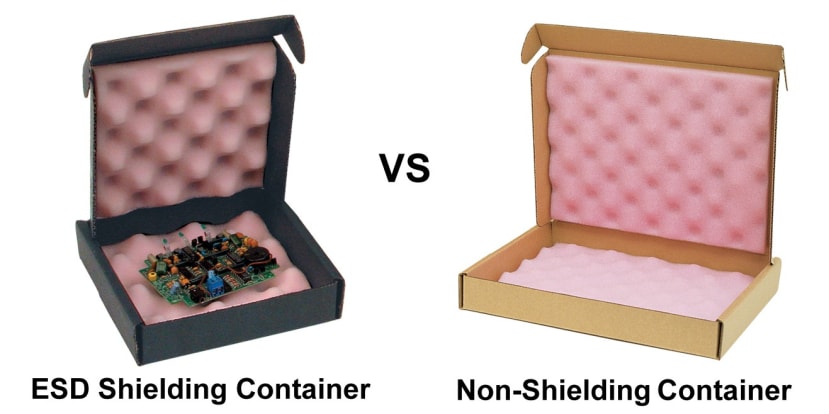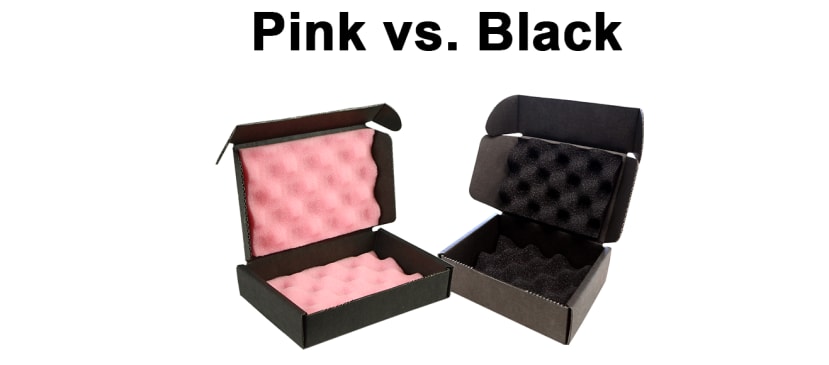3 Tips for using Containers to store & transport your ESD sensitive devices
Follow articleHow do you feel about this article? Help us to provide better content for you.
Thank you! Your feedback has been received.
There was a problem submitting your feedback, please try again later.
What do you think of this article?
Do you use containers to store or transport ESD sensitive items? If so, make sure to read on! We've compiled a list of 3 tips you should follow to make sure your ESD sensitive devices are fully protected.
So let's get started:
1. Use shielded containers!
ElectroStatic Discharge (ESD) is silent, quick and potentially lethal to electronic parts. When electronic parts are not properly handled during manufacturing, assembly, storage or shipping, damage from ESD can reach into the millions of dollars each year.
For an ESD control container to be effective and meet EN 61340-5-1 Edition 2.0 2016-05, the requirements are:
- Surface resistance 1 x 104 to < 1 x 1011 ohms per IEC 61340-2-3
- Discharge Shielding (energy penetration) < 50 nanoJoules per IEC 61340-4-8
We know what you’re saying now: "But non-shielding containers are so much less expensive than ESD shielding containers." Unfortunately, it’s not as simple as that.
Non-shielding containers might be cheaper, but they are not less costly when it comes to handling ESD sensitive items. Anytime ESD sensitive parts and assemblies are handled, regular containers are not a sound option, even part of the time, as the risk of ESD damage is always lingering. As a result, costs will be incurred, either via ESD damage or as an additional investment in discharge shielding packaging and material handling containers.
The disadvantages of cross-using shielding and non-shielding containers include:
- Increased cost
- Risk from ESD damage
- Handling inconvenience
The cost of a discharge shielding container is far less than the cost associated with damaged parts or extra handling that result with a "less expensive" non-shielding container. So the bottom line is: ALWAYS go for shielded containers!
2. Put a lid on it!
A Faraday Cage effect can protect ESDS contents in a container with a shielding layer (this is what a shielding bag has). This Faraday Cage effect protects people in real life when a lightning bolt strikes an airplane or automobile with the charge residing on the outer metal fuselage or car body. The Faraday cage effect causes charges to be conducted around the outside surface of the conductor. Since similar charges repel, charges will rest on the exterior.
To complete the enclosure, make sure to place lids on boxes or containers. Packaging with holes, tears, or gaps should not be used as the contents may be able to extend outside the enclosure and lose their shielding as well as mechanical protection.
| Outside an EPA | Inside an EPA |
|
Outside the ESD protected area (EPA), the lid needs to be in place to provide the ESD control property electrostatic discharge shielding. Per Packaging Standard EN 61340-5-3 clause 5.3 Outside an EPA: "Transportation of sensitive products outside of an EPA shall require packaging that provides both: a) dissipative or conductive materials for intimate contact b) a structure that provides electrostatic discharge shielding.” |
Inside the EPA, it would still be a good idea to have the lid in place, but it is not a requirement. When using a shielded container, electrostatic charges and discharges take the path of least resistance. Packaging with the discharge shielding property protects ESD sensitive items from the effects of static discharge that are external to the package. |
3. Choose the right foam!
Generally speaking, there are 2 types of foam available with shielded containers: pink static dissipative and black conductive foam. Depending on your application and/or budget you should choose the one best suited for you.
There are resistance differences but the key is that the black foam resistance is inherent and longer lasting:
| Pink Static Dissipative Foam | Black Conductive Foam |
| Static dissipative polyurethane <1011 ohms |
Conductive polyurethane 1 x 103 to < 1 x 105 ohms |
| Antistatic low charging - minimising electrostatic charge generation | Permanently conductive |
| Will lose electrical properties over time | Will not lose electrical properties |
| When exposed to the environment, the foam will discolour (turn yellow) over time | Foam will not discolour over time |
| Economical | Higher initial investment; better value for long term applications |
| Ideal for short term use and/or one-time shipments | Ideal for storing or transporting ESDS over a prolong period of time, and reusing the container |
| Not recommend for lead insertion applications | Not recommended in applications where Static Dissipative properties are required |
| Easy to adapt for custom uses by die-cutting, laminating, etc. | |
| Non-contaminating, non-corrosive, and non-sloughing |
We hope you found this post helpful and informative - let us know if you have any requests for future blog posts.





Comments